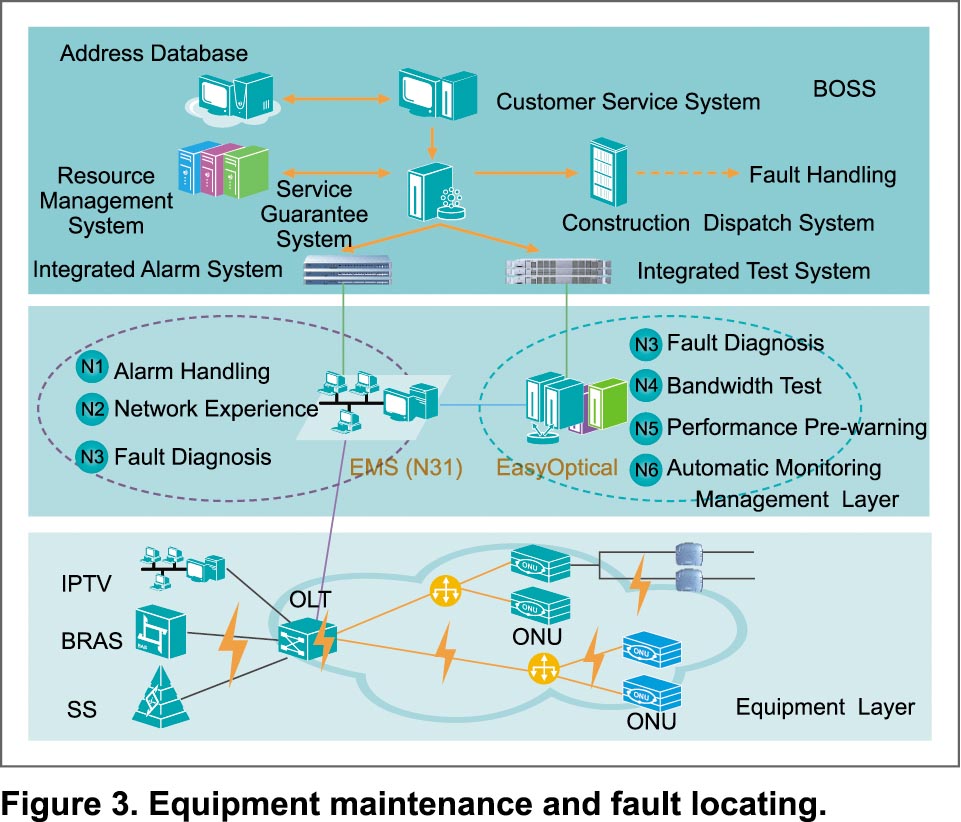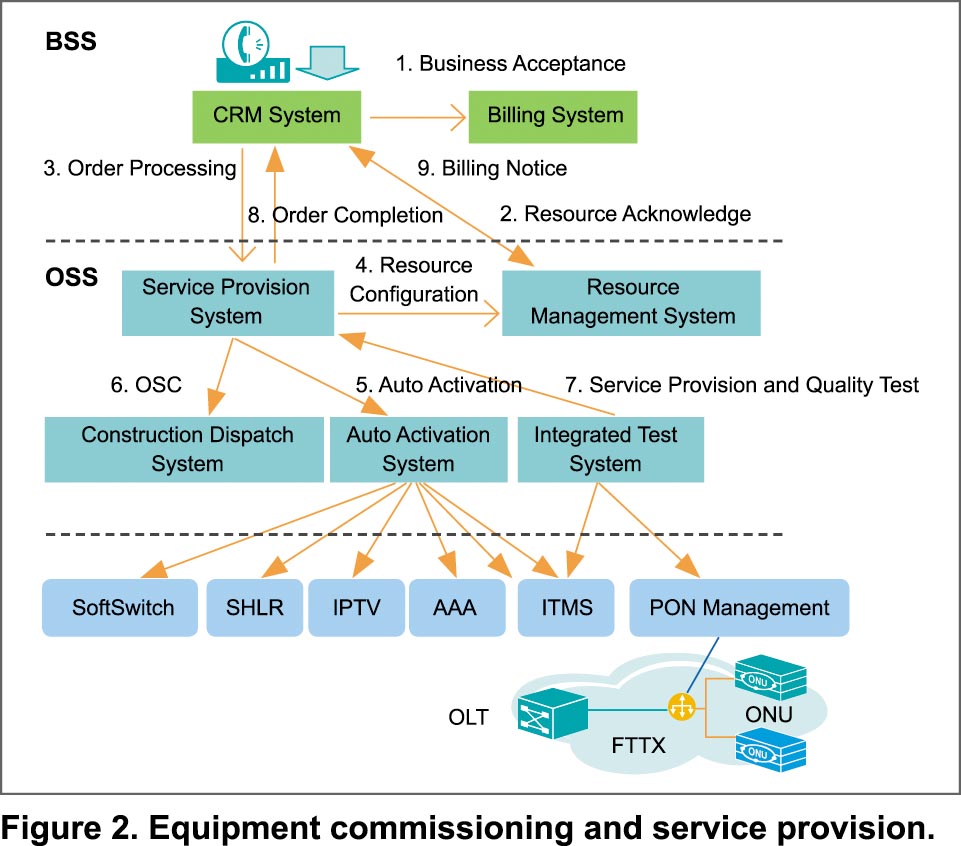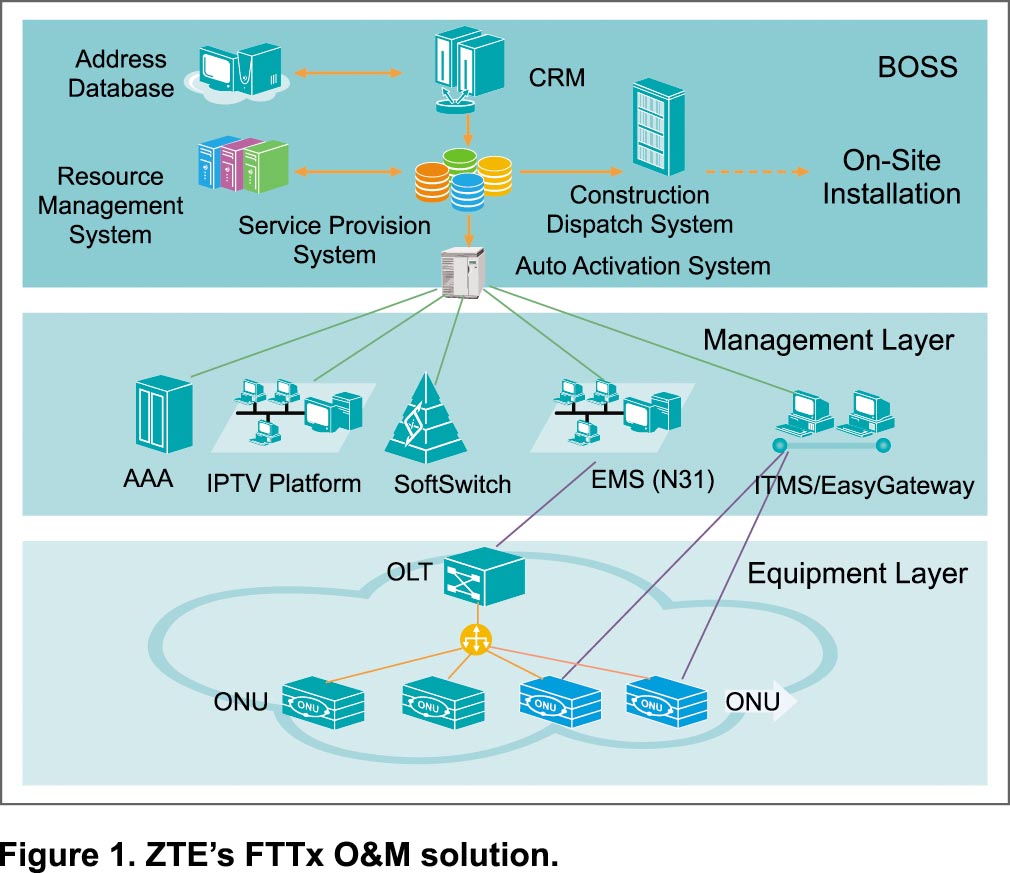FTTx O&M Solution
In the construction of broadband access networks around the world, PON is the technology of choice. EPON and 10G EPON have tended to dominate in Asia-Pacific countries, but most operators are now using GPON. Increased GPON deployment brings with it strong demands for broadband operation and maintenance.
Driven by a “fiber in copper out” strategy initiated by China Telecom, a large number of fixed-line access devices have been moved out of specialized equipment rooms and into buildings and residential premises. These devices require unattended operation and maintenance (O&M). A dramatic increase in the amount of equipment also increases maintenance difficulty. To meet the diverse service needs of subscribers, optimized broadband operation and management should be provided. As more optical fibers are used in the uplink, fiber maintenance has become a major concern.
With the robust growth of PON worldwide, many FTTx O&M issues have arisen. In particular, commissioning and maintenance of equipment is a critical issue. Commissioning involves configuration of equipment as well as service activation and provision. Maintenance involves routine maintenance and fault locating.
Through in-depth analysis of PON features, and with a view of reducing operational expenditure, ZTE has developed an FTTx O&M solution to meet the needs of current and next-generation PON networks. This solution provides efficient operation, management, and maintenance for FTTB, FTTH, and FTTN access modes.
FTTx O&M Components
ZTE’s FTTx O&M solution consists of Business Operation Support System (BOSS), management layer, and equipment layer (see Figure 1). BOSS contains resource management system, service activation system, construction dispatch system, and automatic activation system, all of which are closely related to xPON operation and maintenance. Located in the management layer are EMS (N31), ITMS, and EasyGateway.

Equipment Commissioning
Equipment commissioning encompasses planning, deployment, number allocation, and construction.
The planning stage involves resource planning and engineering design of lines and equipment. An address database sheet and a line data sheet (from line to user) should be included in the design of lines, and an equipment sheet with information about equipment serial number, manufacturer, port number, port attributes, and port status should be included in equipment design. Resource planning involves ONU certification and identification, domain name, VLAN, IP address, voice service, and optical line coding.
After engineering design and resource planning has been completed, off-line batch configuration, template configuration, planning sheet import, equipment installation (plug and play), remote zero touch, automatic management address configuration, equipment replacement (plug and play), and automatic service recovery are implemented.
Devices and systems that are deployed in the deployment stage include OLT, ONU, EMS/ITMS, resource management system, and softswitch management system. At the number allocation stage, FTTB and FTTH numbers for public, governments, and enterprises are allocated. At the construction stage, equipment installation and commissioning, as well as service provision and verification are completed. These stages ensure automatic provision of incumbent data, voice, and IPTV services.

ZTE participated in drafting FTTx O&M specifications and putting them into practice. The FTTx O&M solution facilitates easy interoperability between FTTx and BOSS. This allows the CRM system to handle orders, the resource management system to configure resources, the service provision system to coordinate service procedures, the auto work order system to dispatch and activate work orders, and the EMS system to automatically configure and provide end-to-end FTTx services without manual intervention. FTTx O&M shortens activation time of FTTx services from 2-3 hours to 20 minutes, significantly speeding up service provision. It also supports large scale number allocation, which is beneficial when attracting a great number of FTTx subscribers.
Equipment Maintenance
Equipment maintenance includes routine maintenance and fault locating. Routine maintenance conducted by the network management system involves network access domain and function access domain management, unified equipment management, flexible resource management, monitoring of performance statistics, and remote version upgrade. An intelligent system is also provided for optical power monitoring, ODN fault pre-warning, fault diagnosis, and remote fault recovery.
ZTE provides an all-round FTTx service guarantee solution that allows interconnection among the service guarantee system, PON network management system, and fault handling system. When incorporated into an end-to-end O&M procedure, the FTTx service guarantee system automatically handles FTTx faults.

The FTTx service guarantee system also provides integrated optical and copper fault diagnosis as well as rapid end-to-end fault locating. When an FTTx network fails, the system obtains relevant information in the fastest time possible, and implements end-to-end fault diagnosis and locating. Diagnosis results are then sent to an automatic fault handling system. Finally, the automatic fault handling system sends these results to O&M personnel via a mobile phone or electronic work order. This not only ensures fast troubleshooting but also saves personnel effort in finding faults. As a result, maintenance efficiency is greatly improved, and user complaints are reduced.
Conclusion
GPON has aroused the interest of leading operators for its high bandwidth and high split ratio. As GPON networks are being deployed around the world, operation and maintenance has become the focus of attention. Today, market competition tends to be customer centred. FTTx services offered by operators are similar in nature. So those with a complete FTTx O&M solution encompassing equipment commissioning, service provision, equipment maintenance, and fault locating will gain a competitive advantage in the marketplace.